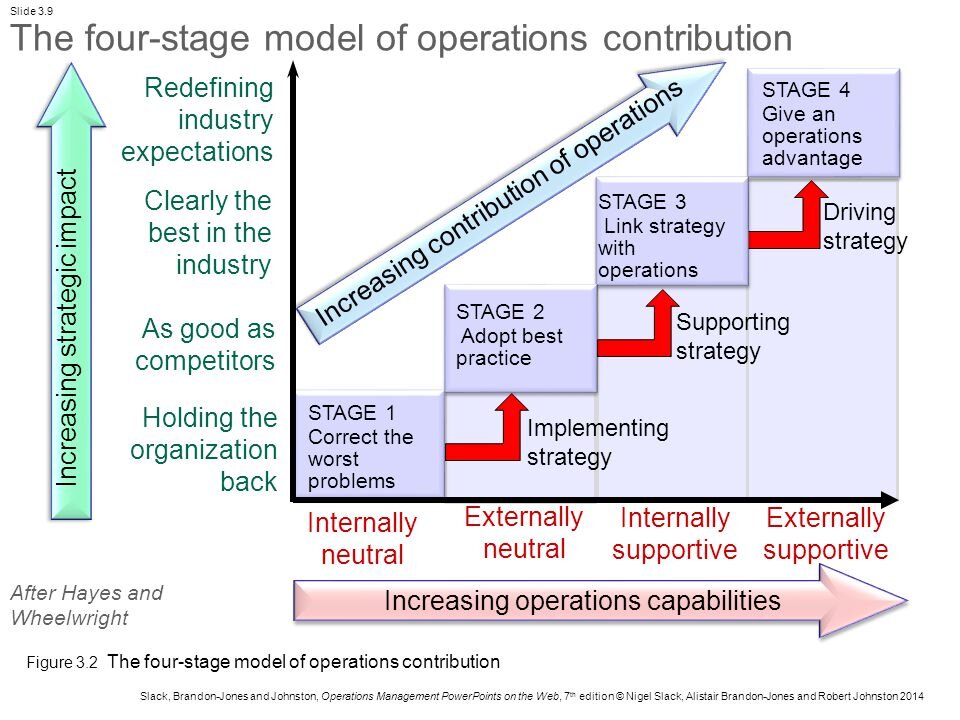Service firms that have reinvented themselves to sustain their leadership position have shared a common approach; like successful manufacturing firms they have structured their operations according to a four-stage model of competitiveness, where they have applied manufacturing strategy concepts, focus and integration as they moved from lower to higher stages.
After Four Stages of the Hayes and Wheelwright Model
Stage 1: Internal Neutrality - Fix the Worst Problems
This is the stage at which the operations function is attempting to reach a certain minimum standard and is generally considered to be at the very poorest level of contribution by the operations function. The other business functions view it as a hindrance when it comes to the delivery of competitive advantage. Its goal at this stage is to be largely ignored, focusing on avoiding mistakes, it tends to be reactive and somewhat in-ward looking.
Stage 2: External Neutrality - Adopt Best Practice
Here as a first step of breaking out of stage 1 the operations function must compare its performance with competitor organisations. Bench-marking its performance against its competitors will enable the business to identify and adopt best industry practice. The operations function can then attempt to be externally neutral by trying to match the benchmarks it has identified.
Bench-marking promotes superior performance by providing an organised framework through which organisations learn how the "best in class" do things, understand how these best practices differ from their own, and implement change to close the gap, the essence of bench-marking is the process of borrowing ideas and adapting them to gain competitive advantage (Besterfield et al., 2003).
Stage 3: Internally Supportive - Link Strategy with Operations
In reaching stage 3 the business operations will be broadly up there with the best having reached the ‘first division’ in their market and by linking strategy with operations, they will have aspirations to continue to improve in order to become clearly and unambiguously the very best in the market.
Stage 4: Externally Supportive - Give an Operations Advantage
At stage 4 the company will be looking to the future, the vision for the operations function at this stage will be to provide the foundation for future competitive success by taking a lead role in strategy formulation. Over time it will develop operations-based capabilities by organising resources in innovative ways and deliver strategic flexibility which will allow the business to adapt as markets change.
Starting at Stage 1 a review of the internal processes will allow managers to set minimum performance standards for the operations function of their business. Moving to a higher stage to regain competitive advantage in their local market, bench-marking with immediate competitors will allow them to identify and adopt best practise. It will also enable them as process managers to implement strategies to increase service, operations and process capacity within their business. With these industry and competitive analysis in mind they can set out to carve a distinctive strategic position where they can outperform their rivals by building competitive advantage.
Author: Nigel Chetty | MBA

